Speedy Swallows
The swallows have returned in numbers to Tucson
On a recent morning walk at Sweetwater Wetlands, there were what seemed to be hundreds of swallows swirling all over every pond in search of flying insects to eat. Most of them were Violet-green Swallows. It is hard to get a clear look at Swallows in flight as they are so fast and erratic, but Violet-Green Swallows appear to be very dark above and crisp white below. In the right light, the black caps and backs of the male come to life as a vibrant green. Click on the photo to view a larger image.
The males have white cheek patches. The male Violet-green Swallows also have violet rumps that can be seen when the light is just right as in the photo below. You can click on this photo to see a larger image. AllAboutBirds says that when foraging in large groups like this, "in flight, these swallows intersperse rapid, shallow wingbeats with long glides and appear rather fluttery and slightly off balance."
A very graceful bird, Violet-green Swallows are aerial acrobats but can fly at speeds of up to 28 miles per hour. We can see these birds during migration season as many move further up through the western states. We also have many Violet-green Swallows in southern Arizona all summer long.
The white on this species' bellies wraps up around their rump, creating a white saddlebag look.
The other swallow species at Sweetwater that morning was Northern Rough-winged Swallows. This species also winters in Mexico and Central America but can be seen throughout most of the United States during the summer. Named after the rough edges of their outer wing feathers, the Northern Rough-winged Swallow has a dingy throat and chest that fades to white.
The backs of Northern Rough-wings are brown, just plain brown. Northern Rough-wings fly more slowly than other swallows and with more deliberate wingbeats.
After working very hard to take photos for a long time, I stopped and just watched the incredible aerial ballet. I had viewed the birds from several points along the trail and was at what is called the "keyhole" pond, named after the shape of the paved viewing path into that pond. Looking to the left, I saw a female Violet-green Swallow that was perched and preening. You can see that the head of the female has a brown cap and she has a dingier face, a very different look from the males.
Reading about these birds at Cornell's AllAboutBirds site, I learned that "like other cavity-nesting species, Violet-green Swallows often have more parasites on their feathers than birds that nest in the open. To control the parasites, they sunbathe and preen frequently." So that's what this bird was doing. https://www.allaboutbirds.org/guide/Violet-green_Swallow/overview
The Swallows have returned to Tucson in numbers! To read about other more desert-based Swallow species, see a report by the Desert Museum


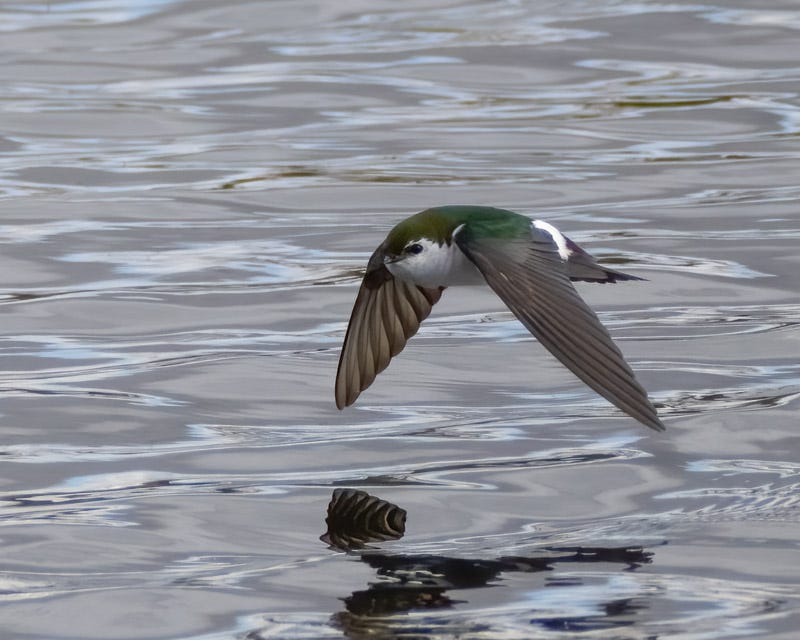
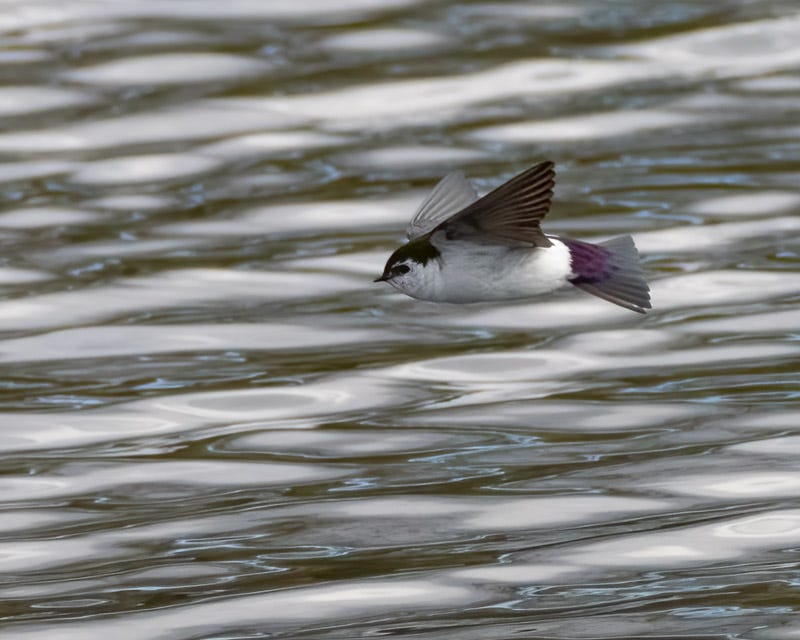


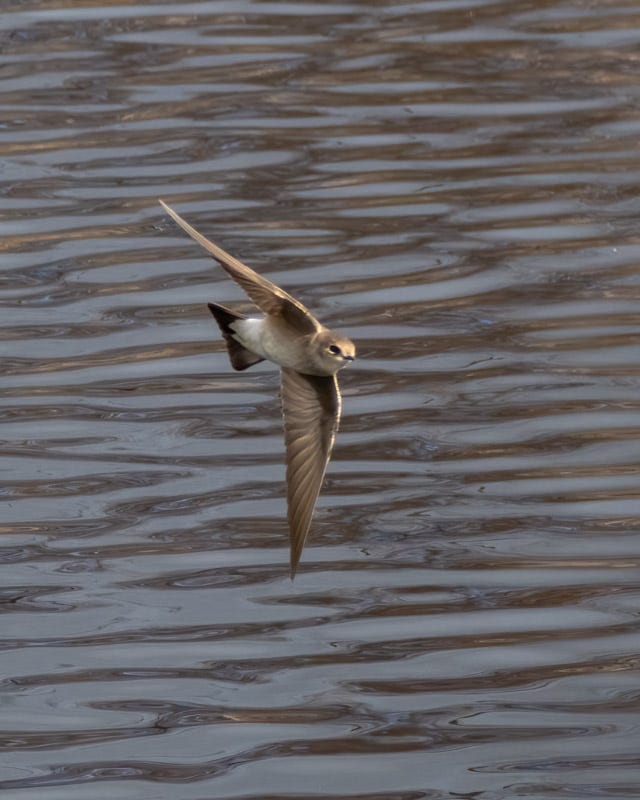
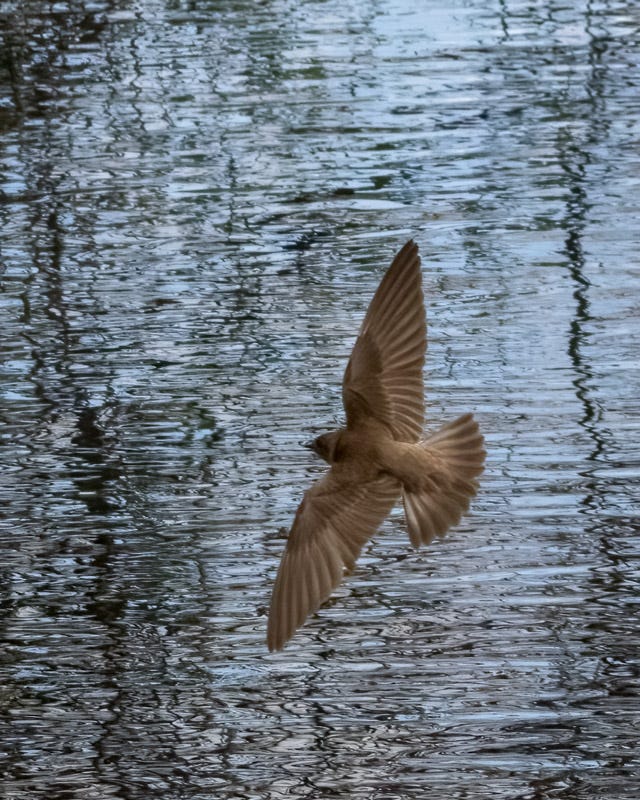
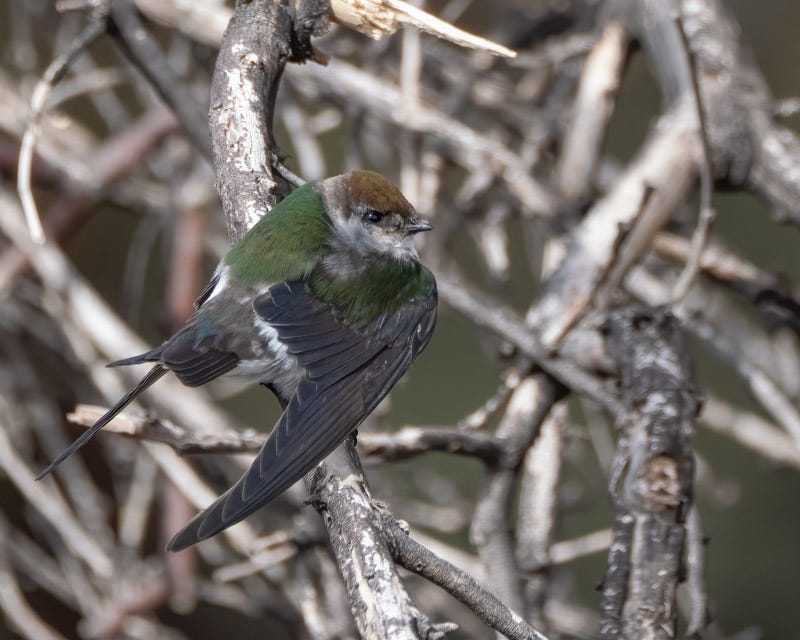

Great captures of those little guys in flight!
Beautiful photos, Dan!